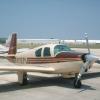Technology Today vs the 1960 Mooney Design
-
Members Online
- Igor_U
- Graf_Aviator
- acekng1
- eman1200
- exM20K
- Flyler
- LOCOLJ
- PeytonM
- ElkoRandy20J
- FlyingScot
- Robert C.
- Hank
- CapPJ
- TCC
- Reek778
- jwarren2
- Greg Ellis
- redbaron1982
- donkaye, MCFI
- Ghattig
- cbarry
- NotarPilot
- Fly Boomer
- Oscar Avalle
- 65MooneyPilot
- Pmaxwell
- VSC_Sean
- Paul Thomas
- Jedei120
- bradp
- Geoff
- kortopates
- Jetdriver
- GeeBee
- Scottknoll
- varlajo


Recommended Posts